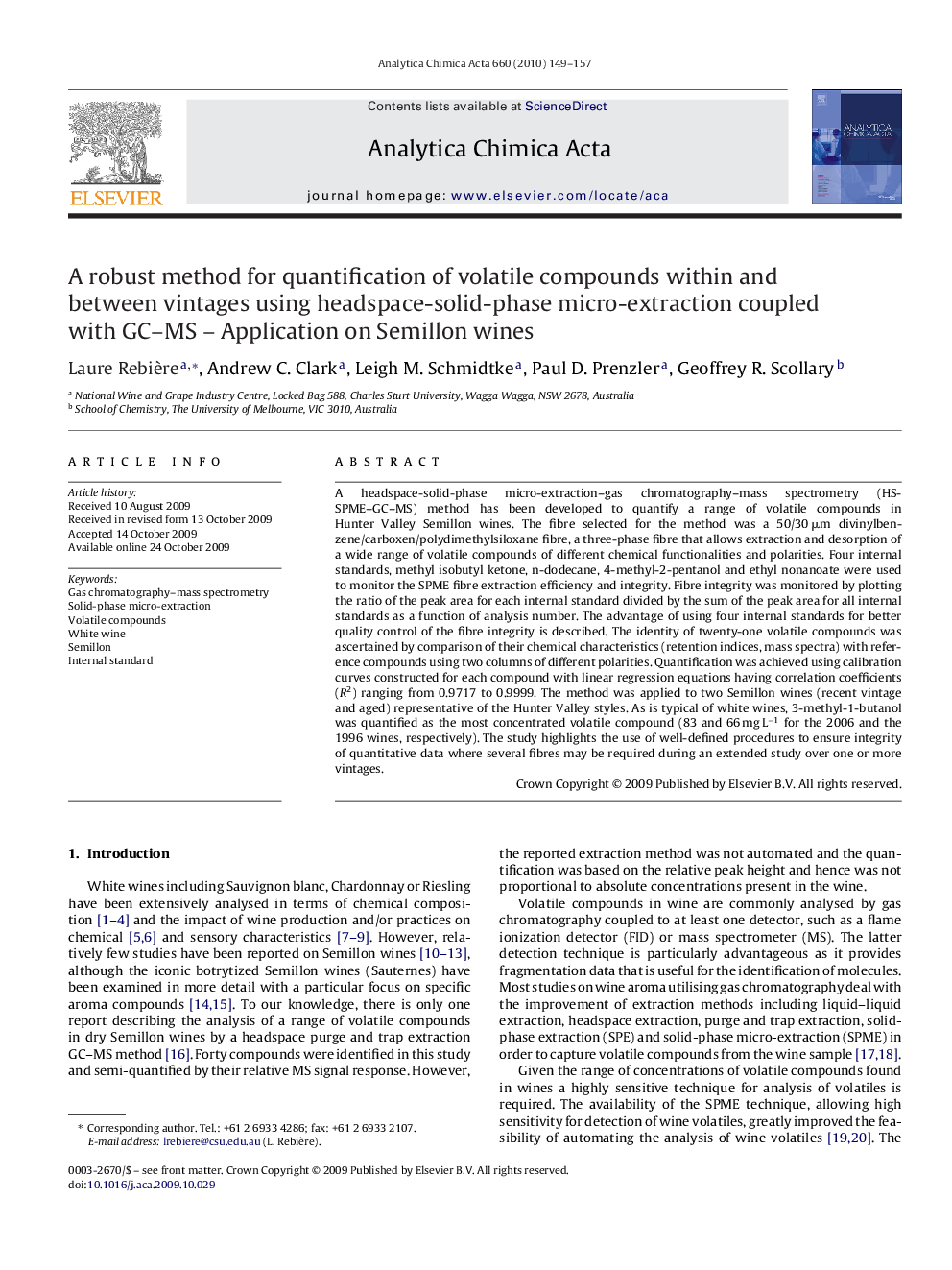| Article ID | Journal | Published Year | Pages | File Type |
|---|---|---|---|---|
| 1167528 | Analytica Chimica Acta | 2010 | 9 Pages |
A headspace-solid-phase micro-extraction–gas chromatography–mass spectrometry (HS-SPME–GC–MS) method has been developed to quantify a range of volatile compounds in Hunter Valley Semillon wines. The fibre selected for the method was a 50/30 μm divinylbenzene/carboxen/polydimethylsiloxane fibre, a three-phase fibre that allows extraction and desorption of a wide range of volatile compounds of different chemical functionalities and polarities. Four internal standards, methyl isobutyl ketone, n-dodecane, 4-methyl-2-pentanol and ethyl nonanoate were used to monitor the SPME fibre extraction efficiency and integrity. Fibre integrity was monitored by plotting the ratio of the peak area for each internal standard divided by the sum of the peak area for all internal standards as a function of analysis number. The advantage of using four internal standards for better quality control of the fibre integrity is described. The identity of twenty-one volatile compounds was ascertained by comparison of their chemical characteristics (retention indices, mass spectra) with reference compounds using two columns of different polarities. Quantification was achieved using calibration curves constructed for each compound with linear regression equations having correlation coefficients (R2) ranging from 0.9717 to 0.9999. The method was applied to two Semillon wines (recent vintage and aged) representative of the Hunter Valley styles. As is typical of white wines, 3-methyl-1-butanol was quantified as the most concentrated volatile compound (83 and 66 mg L−1 for the 2006 and the 1996 wines, respectively). The study highlights the use of well-defined procedures to ensure integrity of quantitative data where several fibres may be required during an extended study over one or more vintages.
